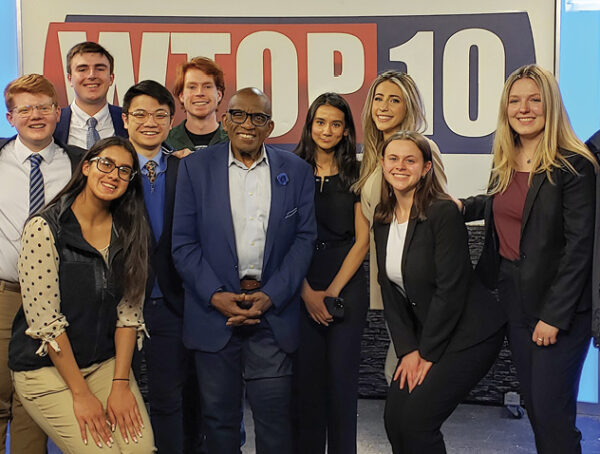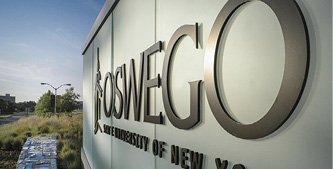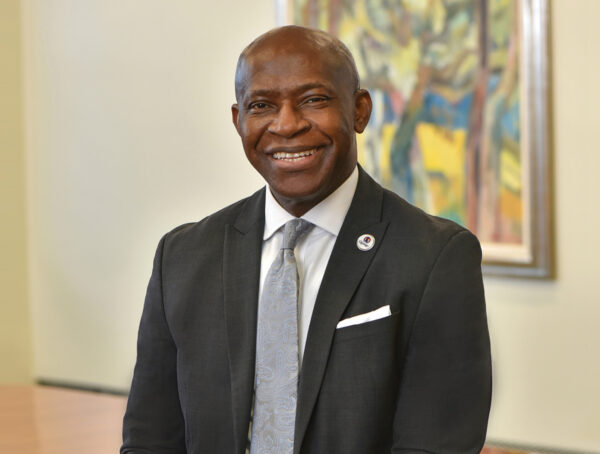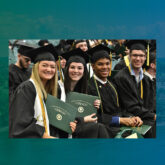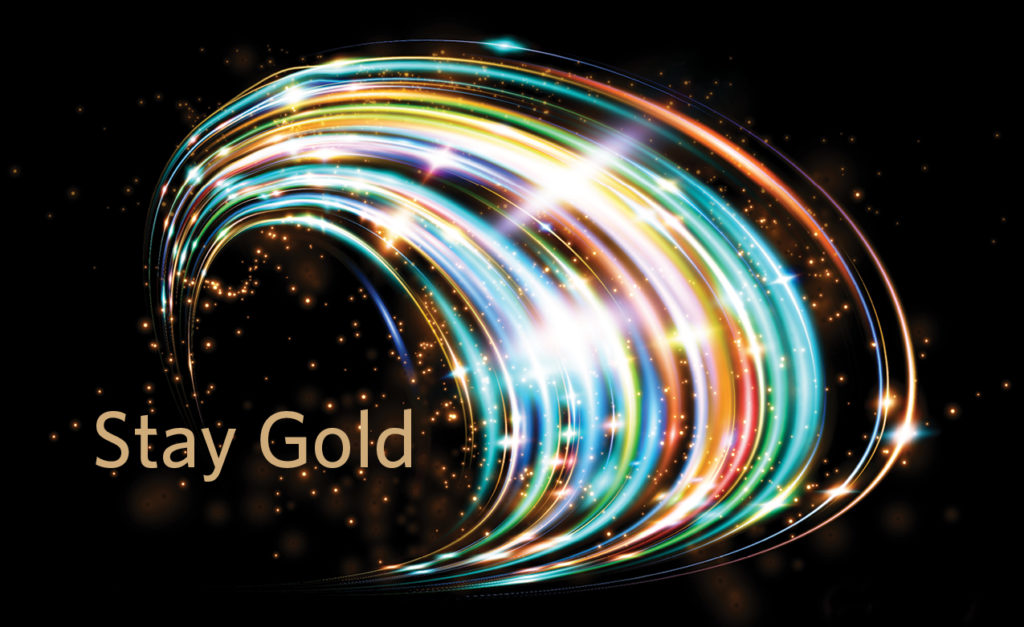
The COVID-19 Pandemic Challenges Oswego Community to Thrive in the Face of Adversity
EARLY MARCH 2020, a busy spring semester was well underway. Professors were giving midterms, the Gospel Choir was planning its 40th Anniversary celebration for April, the annual Graduates Of the Last Decade March Matchness Fundraising Challenge had started and students were preparing for spring break.
Political science major Daiana Diaz ’20 had already ordered new clothes and bathing suits for her long-anticipated senior year spring break trip with 12 of her closest friends.
Public relations major Victoria “Tori” Kammer ’20 had applied to several jobs and was lining up in-person interviews for when she was home in Manhattan over spring break.
Broadcasting and mass communication major Rory Parker ’21 was applying for summer internships as he developed his shot reel.
Resident advisor Samantha Zerbinos ’20 was setting decorations and games for Scales Hall residents for an upcoming large-scale program when she started to hear rumblings about flights getting cancelled due to some virus.
“I was also busy with group projects and essays, excited to go home for spring break and bond with family for what was expected to be a week,” Samantha recalled. “I remember being annoyed at the virus being brought up in every single class. It hadn’t really hit the USA yet, right?”
As chief of Student Association Volunteer Ambulance Corps (SAVAC), Mike Russo ’20 saw the information coming out of the Department of Health and the regional EMS councils.
“I knew that this was definitely not something to take lightly,” he said. “I remember getting into arguments with roommates in my suite as they attempted to downplay this as just the flu.”
Then on MARCH 11, two days before the college’s spring break, New York Gov. Andrew Cuomo announced that all SUNY campuses would be suspending all face-to-face academic instruction.
FOR HOW LONG? NO ONE KNEW.
Should students take all of their belongings home with them at break? Is the campus closing? Could students stay on campus if they wanted to? Will students be able to keep their campus jobs to continue to earn money for their living expenses? What is the college doing to ensure every person’s safety? What supports will faculty receive to convert their courses to an online or distance learning format? Will staff stay on campus or will they have to work from home, too?
THE QUESTIONS CAME FAST AND FROM EVERY DIRECTION.
Several weeks prior to this announcement SUNY Oswego President Deborah F. Stanley had convened her team of senior college administrators and also established an on-campus COVID-19 task force who were working around the clock to put contingency plans into place and compile answers to these questions, as best they could.
“Be assured we will continue to closely monitor and evaluate information and guidance provided by state and federal agencies in order to inform future decisions, and post updates to our COVID-19 website (oswego.edu/covid19), which will feature key resources related to online and distance learning,” President Stanley said in a MARCH 11 statement to the college community. “This is a time of unprecedented circumstances that will no doubt create burdens and challenges for students, faculty and staff.”
The New Vernacular
It wasn’t long until the world was saturated with discussions about this “unprecedented time,” “social distancing,” “flattening the curve,” obtaining “PPE” (personal protective equipment), practicing good hygiene, properly wearing and changing of masks, protecting the most vulnerable and securing enough ventilators.
Then came all of the new technology terminology and work-from-home etiquette (a.k.a. Zoometiquette)—“Donald ducking” on videoconferencing calls (dressed nicely on top with casual or minimal bottoms), swapping in virtual backgrounds on video calls, hosting videoconferencing on secure lines to avoid “Zoombombers” (uninvited attendees who disrupt calls or live online events), and attending virtually everything virtually—from classes to concerts to happy hours.
The novelty of the situation quickly faded as the number of cases and deaths climbed to record levels. Stories emerged of medical professionals holding up phones so loved ones could say goodbye from hospital beds, and funeral parlors quickly adapted to be able to livestream services as social distancing guidelines prevented families and friends to gather en masse.
What became clear quickly was the resiliency of the Laker community. Our alumni stepped up to help in their communities and reached back to their alma mater, voicing their support and seeking ways in which they can help. (See related story.)
In turn, SUNY Oswego established a Student Emergency Fund to help direct the generous donations of our college community members to support immediate student needs, such as housing, technology, food and health care. (See related content.)
Our students had their lives upended in spring, as in-person courses and activities moved to the virtual world. Zoom fatigue and sore eyes after hours in front of a computer screen became the norm. Students, and particularly our 2020 graduates, continued to work hard to manage the mix of emotions they felt about the unfolding events initiated by the pandemic. Yet, they persisted.
Our faculty and staff demonstrated incredible flexibility in their quick response to move in-person classes and work environments into the virtual realm and home offices. They found creative ways to maintain communications and the sense of community. The college initiated programs like Notes from Home and #TogetherOz, which included daily stories of inspiration, videos and bright spots from college community members.
Faculty launched podcast series from their basements, introduced their pets to their students, interviewed each other online on a range of topics and shared tips on how to make life in the pandemic more bearable. Of course, the pandemic itself presented a timely subject for research from a wide range of academic disciplines, including the sciences. (See related story)
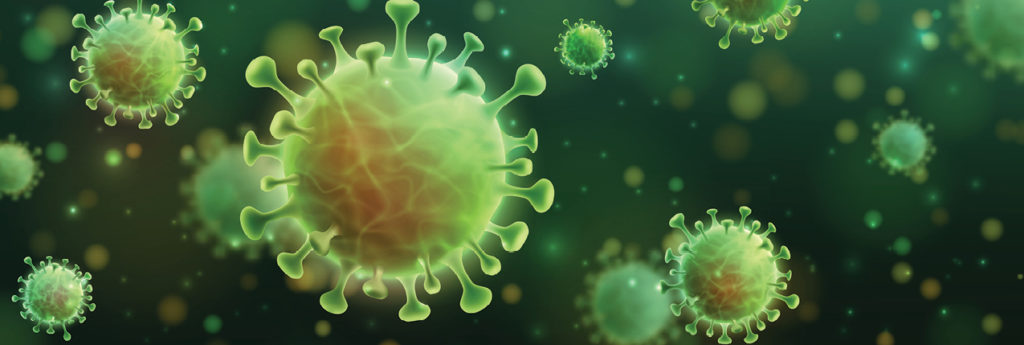
Tenacity over Time
Optimism started to rise in MAY, as the numbers in New York City and Long Island stabilized and warmer weather and outdoor activities were deemed safer.
Following social distancing guidelines and based on the feedback from the graduating class, the college invited members of the Class of 2020 scheduled to graduate in mid-May to a Virtual Torchlight Ceremony and a Virtual Graduation Celebration.
“We still hope to be able to have you participate in a traditional commencement ceremony on campus sometime in the next year when it becomes safe to do so,” President Stanley said to graduates in a MAY 5 email. “But for now, we don’t want to miss this moment to make sure you know how incredibly proud we are to welcome you as SUNY Oswego alumni!”
On Commencement Eve, the college hosted the traditional candlelight Torchlight Ceremony, the official welcome for graduates into the Oswego Alumni Association. Although it was pre-recorded, the ceremony included the customary fanfare of trumpets, the Lighting of the Torch of Learning, the passing of the flame from faculty to alumni, the singing of the alma mater as well as remarks by Class of 2020 student speaker Tori Kammer ’20 and President Deborah F. Stanley.
“We will go down in history for our tenacious spirit and unmatched work ethic,” Tori said. “We will embrace the world with a renewed perspective and make our families, our school and its alumni tremendously proud. Despite every obstacle in our way, we still did it! Unfortunately, we missed a lot of ‘lasts,’ but I want to remind you, we have a lifetime of ‘firsts’ still to come.”
The following day, the college shared a webcast for graduates that featured celebratory remarks by President Stanley, Al Roker ’76, Faculty Assembly Chair Lisa Glidden, Student Association President Takeena Strachan ’20 and U.S. Senator Charles Schumer. Ahmonique “Mo” Evans ’20 and Asha Bay ’19 M’20 presented the Class of 2020 banner to the college. Faculty and staff also shared congratulatory messages with the graduates.
“You decided that giving up wasn’t an option—that the only choice was getting to the finish line,” President Stanley said. “There’s victory in the fact that in a moment of complete uncertainty you chose to find clarity and persevered … We are all living in a grand challenge, and you have demonstrated amazing strength and resilience.”
The college established a Class of 2020 Graduation Celebration website (oswego.edu/class-2020), which featured links to the ceremonies, downloadable signs for graduates to display, congratulatory messages and a slideshow.
As the spring semester wound down, attention focused on the future. What would happen in the fall? Would the college be able to welcome students back to campus? What safeguards could be put in place to enable students’ safe return?
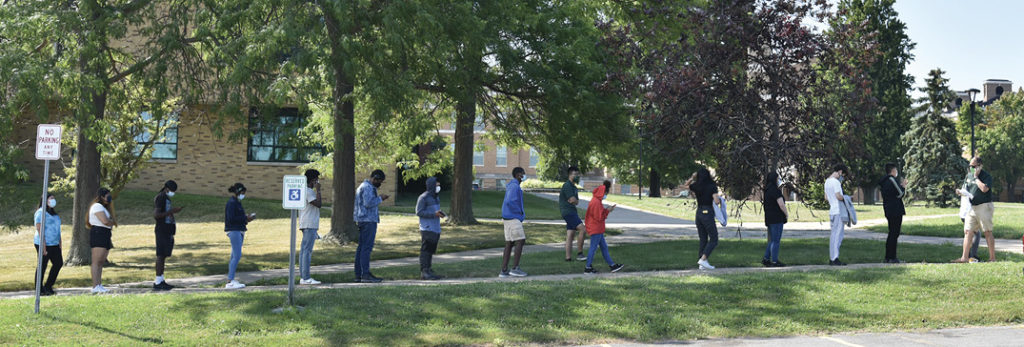
Students returning to campus last fall, stand in line socially distant.
Oswego Forward
BY LATE JUNE, the college leadership had developed a carefully made plan, Oswego Forward, to restart residential campus operations in the fall. The plan ensures that the New York State Phase Four Reopening New York Higher Education Guidelines are met and that the health and safety of all students and employees are protected.
Among the highlights, the plan required students to be tested immediately upon arrival, which was a week to 10 days before the semester began. All breaks and holidays were suspended to encourage students to remain on campus for a condensed fall semester from AUG. 24 through NOV. 25, with the remainder of the semester and finals being completed after Thanksgiving from students’ homes.

4,200 face masks were distributed to campus members in the fall.
SUNY Oswego delivered a full class schedule that was approximately: 1/3 face-to-face; 1/3 online and 1/3 hybrid. Limiting the fully face-to-face classes reduced classroom density and possible exposure.
In addition, campus facilities staff implemented new cleaning protocols and social distancing demarcations within all of the buildings. In Sheldon Hall, for example, traffic heading upstairs was routed to one stairwell, and traffic descending was routed to another stairwell.
Large arrows were taped to the floors indicating traffic flow, and soft seating had been taped over to prohibit people from sitting too close to each other. Plastic shields were installed on frontline staff desks to protect staff as well as visitors.
Large sandwich boards and posters around campus were displayed to encourage responsible behaviors such as wearing face masks, washing hands regularly and practicing social distancing.
Passing the Test
Perhaps one of the most important safeguards the college undertook was extensive testing of all students, faculty and staff.
SUNY Oswego was among the very first colleges to partner with SUNY Upstate Medical University to implement comprehensive saliva testing of all campus members. The test, which was developed by Upstate and Quadrant Biosciences researchers, was recently deemed the most effective COVID-19 saliva test by the U.S. Food and Drug Administration and ranked No. 6 globally for detecting the virus in its earliest stages.
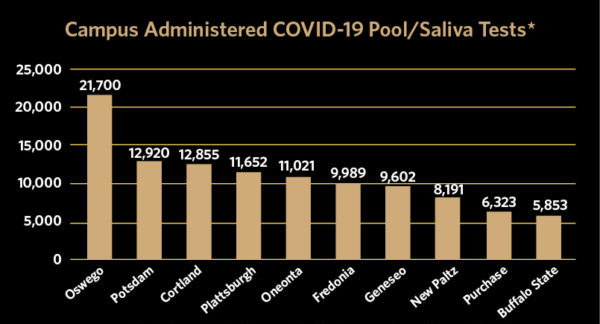
*Data from SUNY Oswego Tracker is current as of Dec. 9, 2020.
OSWEGO PROVIDED MORE TESTS TO ITS CAMPUS COMMUNITY THAN MOST OTHER SUNY SCHOOLS—even those with much larger populations (see related chart). A public online dashboard tracked daily the number of cases of COVID-19 among the campus community, as well as the numbers of individuals in isolation or quarantine.
The effectiveness of the quarantine/isolation protocols and Oswego Forward plan was put to the test by mid-September when the college community approached the infection rate thresholds of 100 individuals or 5% of the total on-campus population specified by the New York State Department of Health in the “Interim Guidance for Higher Education during the COVID-19 Public Health Emergency.”
As the numbers of on-campus cases rose in early SEPTEMBER, the college announced a new and expanded surveillance testing operation with a dedicated testing center in Lee Hall, and it doubled the number of available quarantine and isolation rooms by re-opening the newly renovated Funnelle Hall and increasing the total quarantine rooms to 208 and isolation rooms to 144 (total of 352 rooms).
The college also began wastewater testing twice per week of its buildings and 12 residence halls on campus to collect data and identify possible COVID-19 cases.
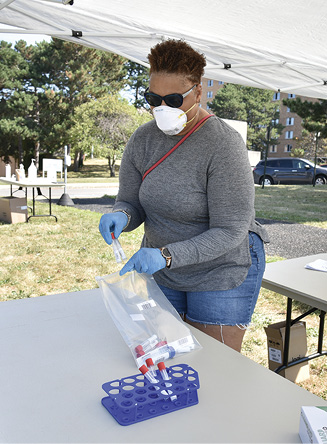
Dr. Jerri Howland, vice president for student affairs and dean of students, collects saliva tests during Opening Weekend in August.
In consultation with SUNY and health agencies, the college paused face-to-face classes on SEPT. 19 for 14 days to stem the spread of the virus. It worked, and the college was able to resume in-person classes on OCT. 5.
“I credit the SUNY Oswego community, particularly our students, in keeping their campus open by proving that strict compliance to health safety protocols can flatten the curve,” said Chancellor Jim Malatras on OCT. 2. “Today’s progress at SUNY Oswego shows that by regular testing, tracking and acting on new cases, and enforcing health and safety rules, campus life can continue during the coronavirus pandemic. I am proud of our SUNY Oswego students for all of their efforts over the past two weeks.”
Although in-person classes resumed in OCTOBER, the college suspended athletics, Greek Life, in-person dining and residence hall visitation for the remainder of the semester.
“We are returning to the classrooms, but we must not let our guard down,” President Stanley said in OCTOBER. “Our actions are critical to the continued safety of everyone in our community. We have collectively displayed to others that when we pull together, care for one another, and follow the rules and guidelines, we can bring our positive cases down and come out of a pause stronger and healthier than before.”
As the end of the semester approached, the college again amped up its testing efforts to ensure that every student tested negative for the virus before leaving campus for their homes. It also became clear that resuming normal activities would not be likely any time soon.
Carrying On
The college made the difficult decision to hold a virtual Commencement ceremony for all May, August and December 2020 graduates at the end of the Fall 2020 semester.
“While we’ve remained cautiously optimistic since the spring, we have resolved to the fact that we still have not reached a point where we can safely hold an in-person celebration,” President Stanley told graduates in NOVEMBER. “However, we don’t want the year to come to an end without properly recognizing you in an official Commencement ceremony.”
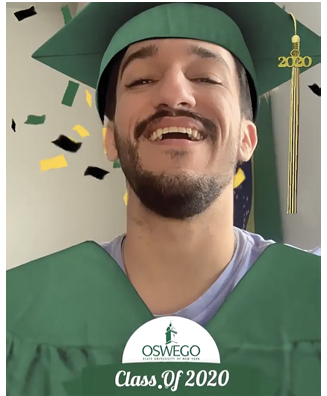 On DEC. 12, the college held five separate ceremonies for approximately 2,000 graduates: four to honor undergraduates who earned their baccalaureate degrees from the School of Business; School of Communication, Media and the Arts; School of Education; or the College of Liberal Arts and Sciences, and a separate ceremony for students earning their master’s degrees, post-master’s degree certificates and post-baccalaureate certificates.
On DEC. 12, the college held five separate ceremonies for approximately 2,000 graduates: four to honor undergraduates who earned their baccalaureate degrees from the School of Business; School of Communication, Media and the Arts; School of Education; or the College of Liberal Arts and Sciences, and a separate ceremony for students earning their master’s degrees, post-master’s degree certificates and post-baccalaureate certificates.
“In these unprecedented times, it’s more important than ever to celebrate the years of hard work and dedication our Lakers have shown and to look forward to the bright futures we know they will have,” President Stanley said.
To assist the college with creating a memorable virtual Commencement for all of our graduates, SUNY Oswego hired StageClip—the world’s leading provider of virtual graduations. In addition to the customary pomp and circumstance, including every graduate being individually announced (with the option for student-generated photo and content) during their respective Commencement ceremonies, SUNY Oswego created a Commencement 2020 website (oswego.edu/2020-commencement) that provided graduates with a one-stop source for caps and gowns, cords, hoods, diploma covers, celebration signs, Snapchat and Instagram filters, and more.
“I hope this moment has helped you focus and to see things clearly,” President Stanley told graduates in her Commencement remarks. “Perhaps time apart from friends and loved ones has opened your eyes to what is really important in your lives, and revealed what is most essential. I urge you to carry this perspective forward; approach your future with a greater understanding of what is truly important then choose the paths that lead you to realize your values and allow those values to thrive in our world.”
Solid Gold
Throughout the pandemic, SUNY Oswego has tried to maintain a pulse on the student body—soliciting their feedback and input whenever possible, and incorporating that into future decisions.
A May 2020 survey of 2,427 Oswego students assessed students’ satisfaction about the college’s overall response to the pandemic, the academic instruction they received and the support they received during the transition. The majority of students felt satisfied on all three counts.
ANOTHER KEY TAKE-AWAY WAS THE IMPORTANCE OF THE RESIDENTIAL COLLEGE EXPERIENCE, especially for those from low-income families or those who do not have access to technology and connectivity.
“A residential campus experience can mitigate against some of those barriers by providing all students equal access to high-speed internet, healthy food, safe housing and appropriate study spaces,” according to the July 2020 report by SUNY Oswego’s Office of Institutional Research and Assessment.
The college has worked diligently to provide additional support—including mental health, physical, nutritional, financial, academic and professional development—for students and 2020 graduates. The college created 16 Oz-Spots—designated areas on campus for groups of no more than six students to gather informally in a safe and clean environment.
In late November, President Stanley announced the Laker Success Package, which included:
- $150 Cash Award—for returning full-time, undergraduate students who registered and returned for spring 2021
- Guaranteed Alumni/Career Mentor—for any Oswego student who wants one
- Imagine 2021—a free five-week program over Winter recess that brought together SUNY Oswego students with alumni, employers, student leaders and guest speakers for career exploration, skill building, professional networking, brand management, mentorship and guidance.
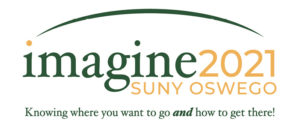
“We are providing these exceptional benefits to ensure our students are successful upon their return to campus this spring (2021) and throughout their time at Oswego,” President Stanley said. “As always, we are investing in our students and will continue to support them now to an even greater degree. We’re rolling out our own ‘stimulus’ package to provide students with financial, networking and career resources that will prepare them for lifelong success.”
As the spring 2021 semester begins, new COVID-19 vaccines are making their way to the most vulnerable populations.
Meanwhile, the college again prepared for the return of our students, using their feedback from fall 2020 to improve the living and learning experience. That includes offering an enhanced dining experience, more face-to-face classes, small group gatherings of student organizations, strategically scheduled days off for stress-busting breaks and continued rigorous, weekly COVID-19 surveillance testing and screening.
Finding the Golden Lining
They say, “necessity is the mother of invention,” and the pandemic was the catalyst that propelled the college into new realms. For example, within the Alumni and Development division, the college found new technologies and tools to engage our 89,000 alumni in a virtual realm.
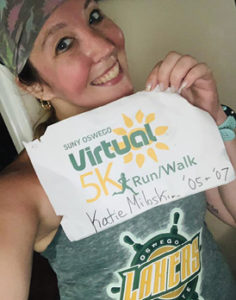
Virtual 5K participant, Katie Miloski ’05 M’07
The division launched a new podcast series, the Virtual 5K, online Scholars Celebration, Alumni Admissions Ambassadors program, and the Oz Virtual Village e-newsletter promoting a range of alumni-led virtual concerts, presentations, financial tutorials, cooking classes, yoga sessions and professional development trainings.
Our alumni community itself took time to reflect on positives that emerged during the pandemic. (See related content.)
Similarly, other offices across campus shifted their services online, including Career Services whose employer relations, workshops/seminars, student appointments, class presentations and support for enrollment management continued without interruption.
The college’s Office of Diversity and Inclusion created Laker Live, which encourages any campus community member to submit a proposal to virtually host anything from a how-to session or a performance to a fitness class or a painting lesson. Every Laker Live session also serves as a fundraiser for the Student Emergency Fund.
While the long-term impacts of the pandemic are yet to be determined, the SUNY Oswego community has shown its true colors in facing challenges head-on and nimbly changing course as needed to navigate the ever-changing and tumultuous waters heading for our beautiful lakeside college community.
“SUNY Oswego has the record of resilience in the face of great odds, of employing thoughtful study and response, and of the will, strength and endurance to bring our plans to fruition,” President Stanley said. “This is more than surviving—this is finding the means and the character of thriving through adversity.”
You might also like
More from Featured Content
Vision for the Future
VISION for the Future Peter O. Nwosu began his tenure as the 11th president of SUNY Oswego, building on the solid …
Envisioning the Potential in All Students
ENVISIONING the Potential in All Students Educator donates $2 million in recognition of his Oswego education, in support of future teachers Frank …
A Vision of Support
A VISION of Support Award-winning principal makes an impact on her school through her positivity and commitment When Nicole Knapp Ey ’02 …







